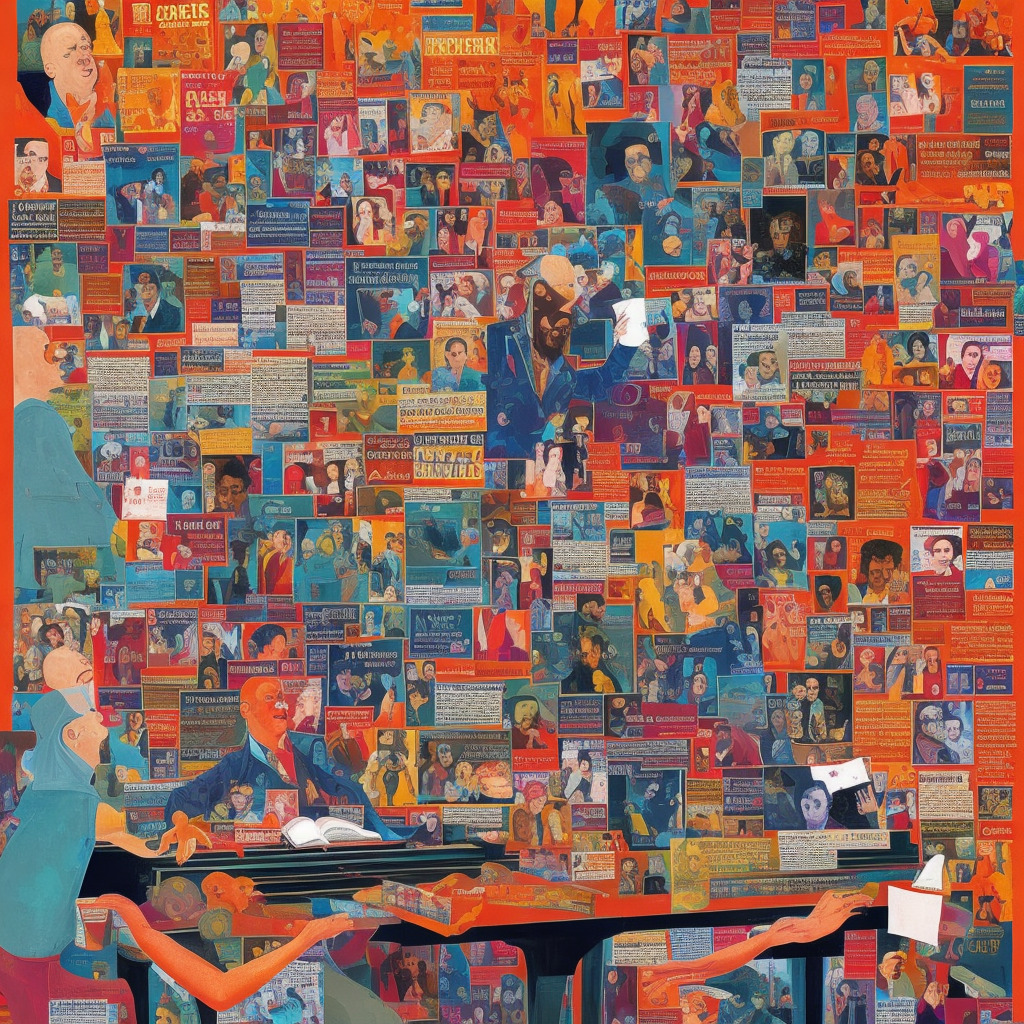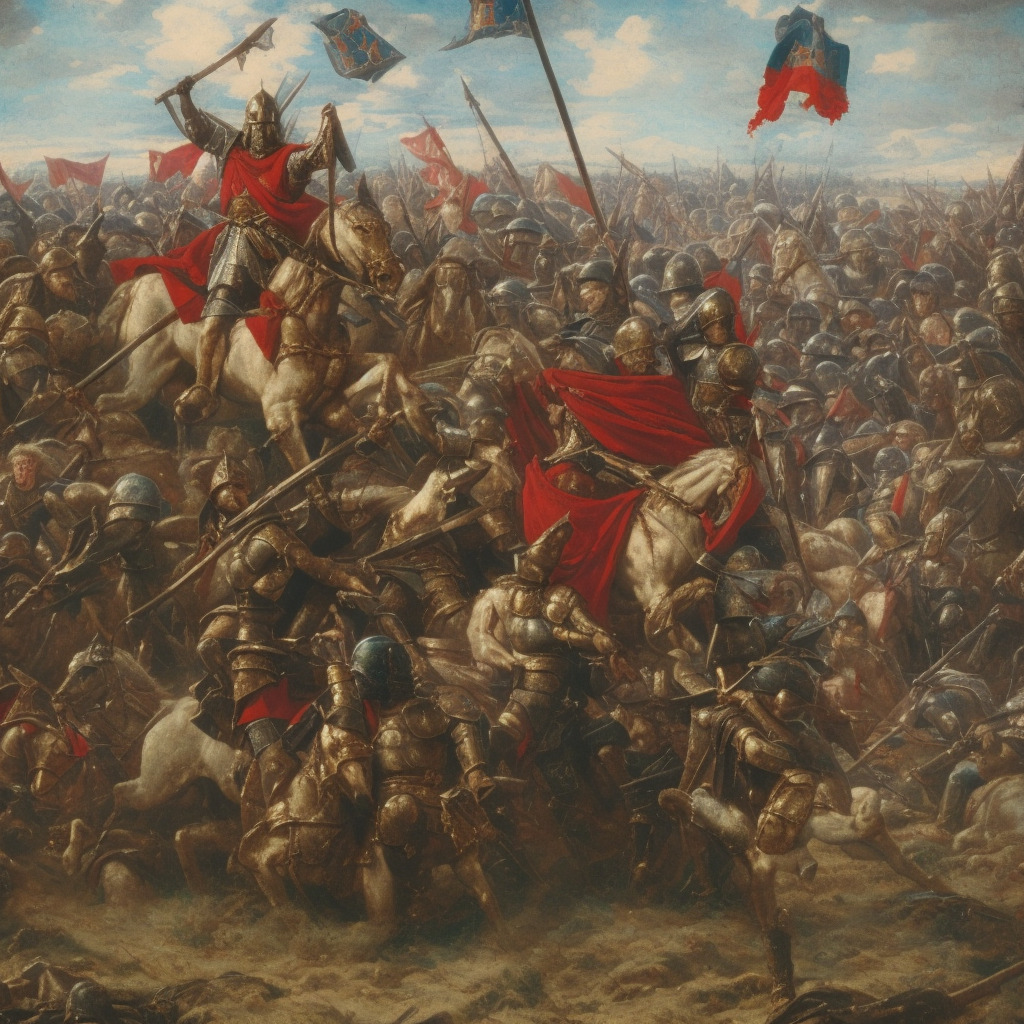Dream Theater: Pioneers of Progressive Metal
Dream Theater, formed in 1985, is a leading progressive metal band known for its technical prowess. ‘Octavarium,’ released in 2005, highlights their skills and evolution, reflecting their growth and creative synergy among members John Petrucci, James LaBrie, Jordan Rudess, John Myung, and Mike Portnoy.
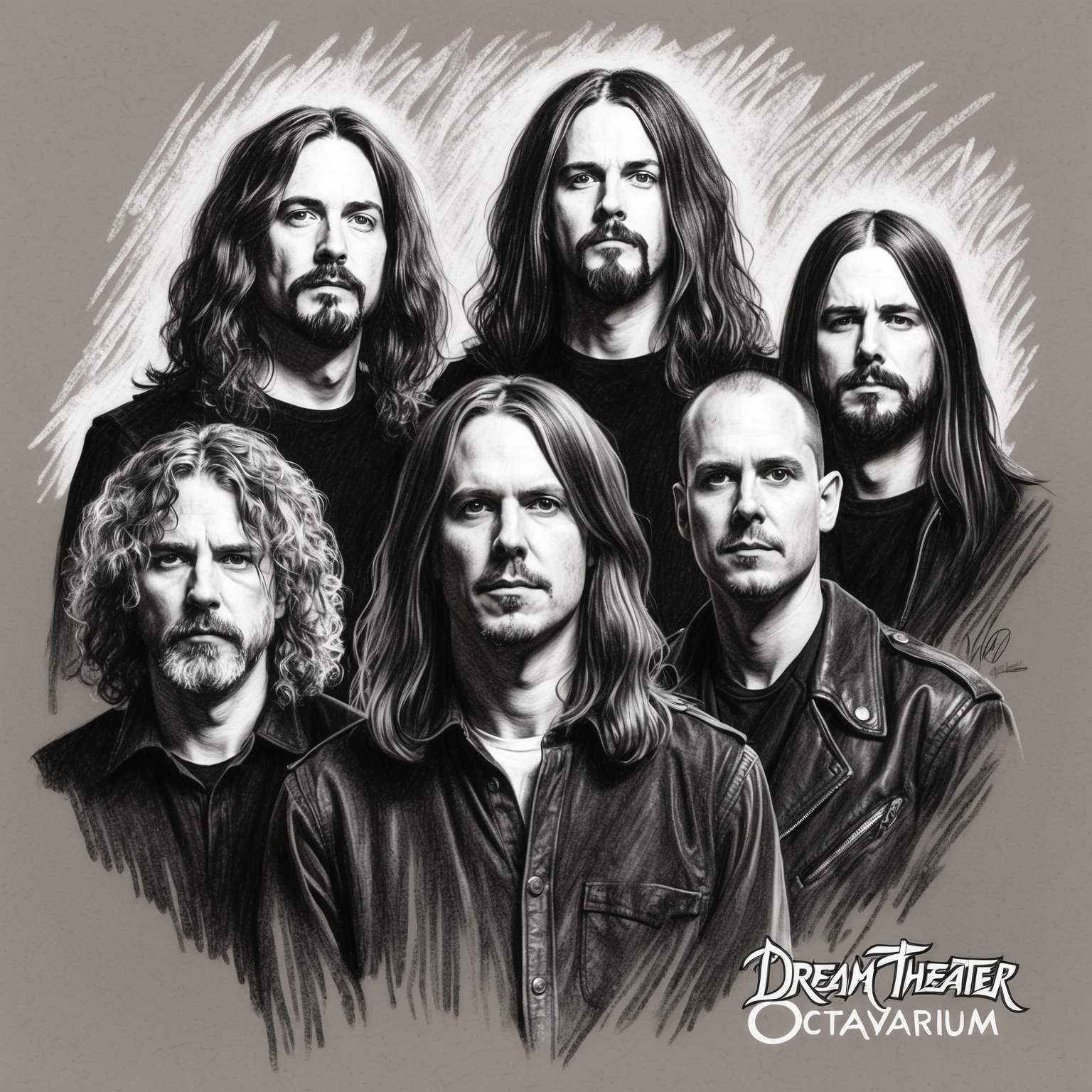
Dream Theater, an American progressive metal band, has long been at the forefront of the genre, successfully marrying intricate musical compositions with narrative-driven lyrics. Formed in 1985 by John Petrucci, John Myung, and Mike Portnoy at Berklee College of Music, the band quickly earned a reputation for their technical proficiency and ambitious musical vision. The release of ‘Octavarium’ in 2005 marked a significant chapter in Dream Theater’s illustrious career, as it showcased their evolution and versatility within the progressive metal landscape.
During the early years, Dream Theater grappled with the challenges of establishing a foothold in the music industry. However, their unwavering commitment to their craft—evident in seminal works like ‘Images and Words’ and ‘Awake’—solidified their status as pioneers. The release of ‘Octavarium’ underscored their maturation as artists. Embracing a more symphonic and melodic approach, the album further expanded their musical boundaries and resonated deeply with both longtime fans and new listeners.
‘Octavarium’, the song, emerged during a period of intense creative exploration for the band. Known for their collaborative spirit, members John Petrucci, James LaBrie, Jordan Rudess, John Myung, and Mike Portnoy each brought unique elements to the composition. Their synergy is evident in the song’s complexity and dynamism, a hallmark of Dream Theater’s signature sound. The band’s ability to convey profound themes through a rich tapestry of sound is a testament to their legacy as titans of progressive metal.
The Mind Behind the Music: John Petrucci
Dive into the world of John Petrucci, Dream Theater’s lead guitarist and the chief composer of ‘Octavarium,’ whose masterful blend of technical dexterity and profound musicality brings the epic track to life.
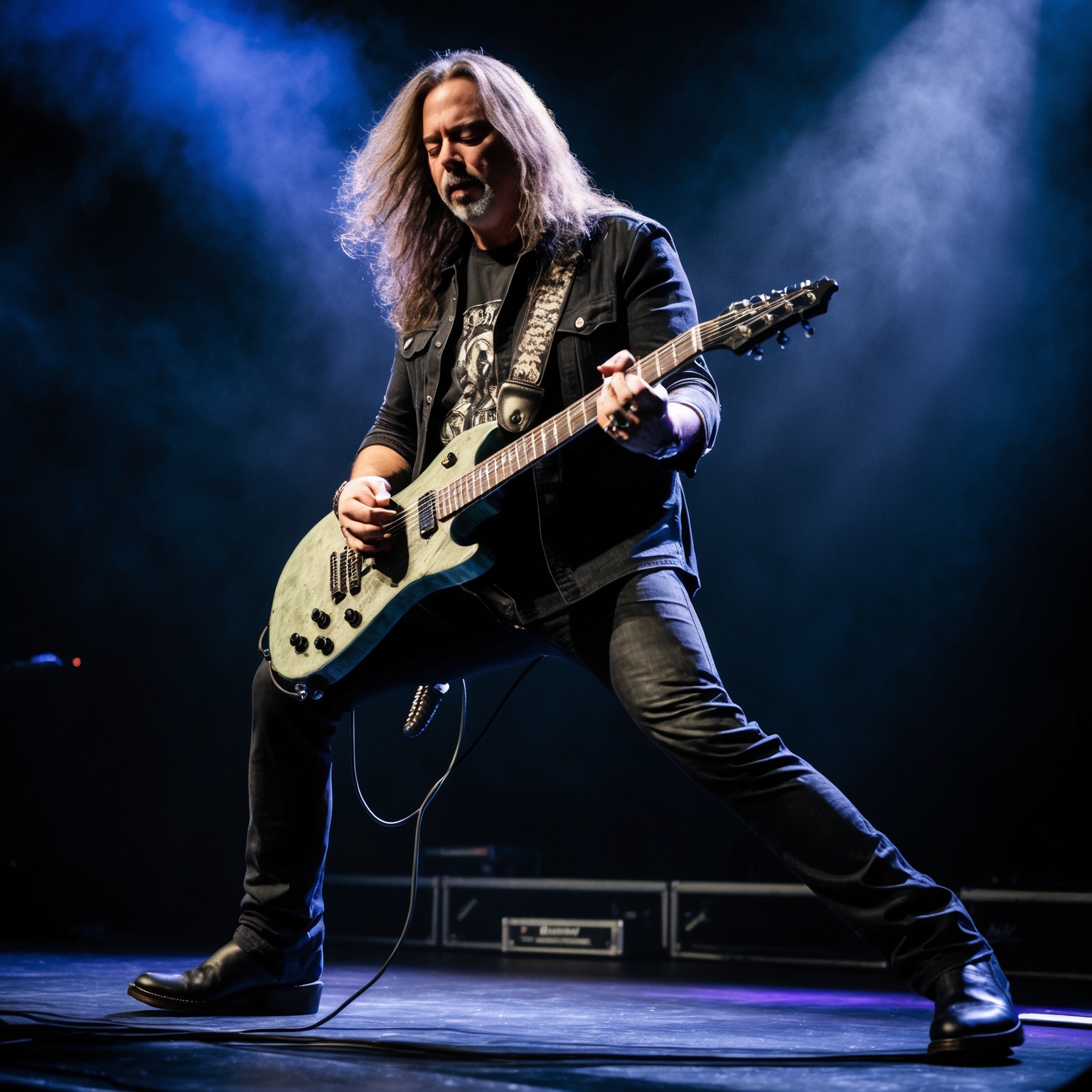
John Petrucci, a founding member and the guitarist of Dream Theater, is the primary composer behind the epic masterpiece “Octavarium.” Born and raised in Long Island, New York, Petrucci displayed an early aptitude for music, quickly developing into a guitar virtuoso with a penchant for blending technical precision with emotional depth. His formative years were marked by a passion for progressive rock, with bands like Rush, Yes, and Pink Floyd significantly influencing his musical direction.
Petrucci’s unique musical style is characterized by an intricate blend of progressive metal and rock, seamlessly melding complex time signatures with melodic solos. He is known for his ability to craft elaborate compositions that push musical boundaries while maintaining accessibility for the listener. His academic background, including his time at Berklee College of Music, laid a solid foundation for his theoretical knowledge, which continues to illuminate his work to this day.
In the creation of “Octavarium,” Petrucci played a crucial role, not only in composing the intricate guitar parts but also in driving the thematic essence of the song. His influences are apparent throughout the composition, with dynamic shifts and lyrical interplay that reflect both his technical prowess and emotional acuity. The song stands as a testament to Petrucci’s ability to craft a cohesive narrative through music, intertwining his guitar work with the broader symphonic elements orchestrated within the piece.
Recognitions and Interpretations: Octavarium’s Impact Beyond
Explore the journey of ‘Octavarium’ by Dream Theater, from its internal accolades within the music community to the notable fan covers and its enduring cultural impact.
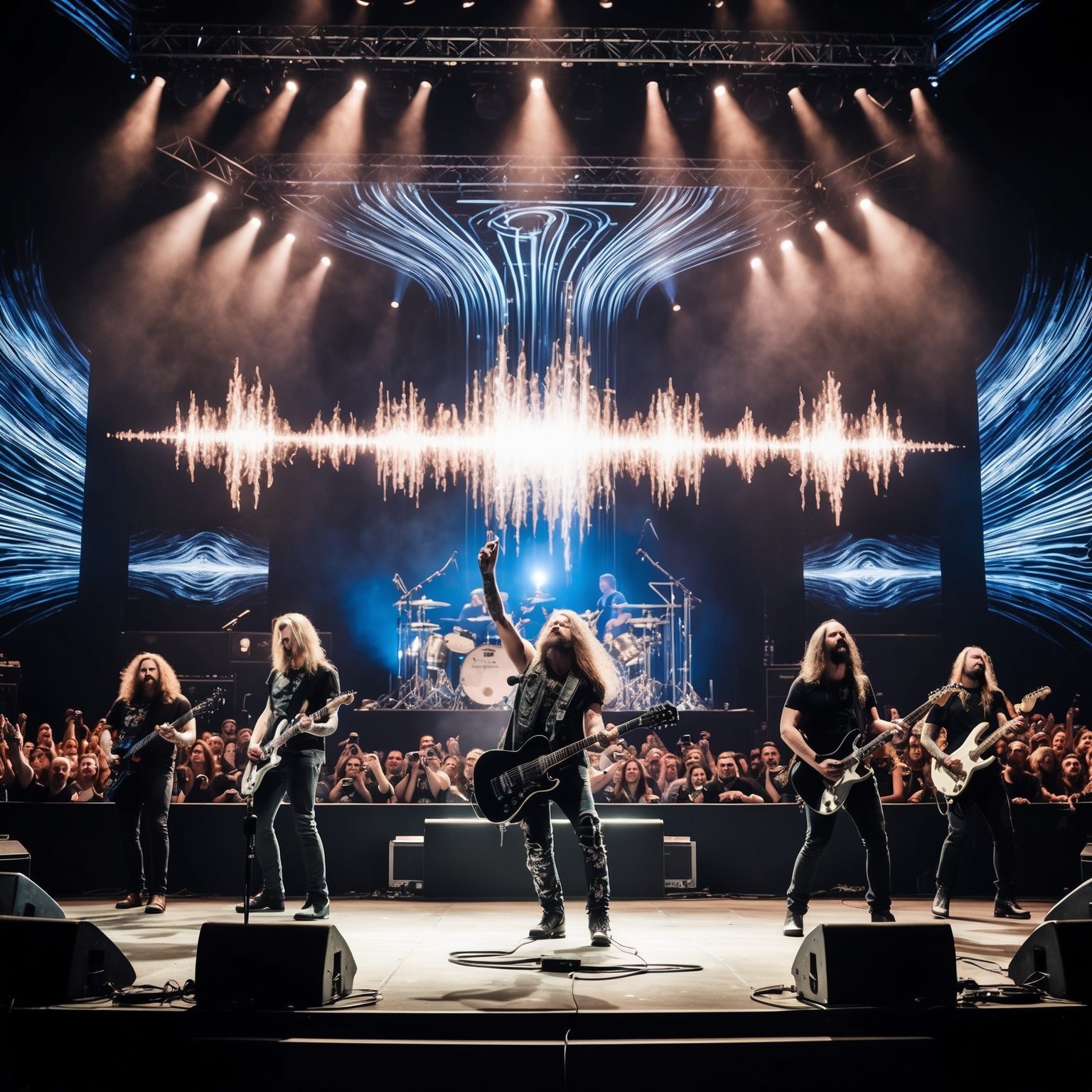
Dream Theater’s “Octavarium” is a testament to progressive metal’s dynamism, and while it may not have been showered with mainstream awards, its influence runs deep within the musical community. Although the song itself may not boast any prestigious awards, the album it is part of, ‘Octavarium,’ received considerable acclaim from both critics and fans, highlighting the band’s significant contribution to the progressive metal genre. Over time, this epic composition has garnered a dedicated following, further solidifying its place as a monumental work in the realm of concept songs.
The unique structure and ambition of “Octavarium” have inspired many artists to cover or reinterpret it, although these endeavors are often found within fan communities and tribute bands rather than mainstream productions. The song’s intricate guitar solos and sweeping orchestral elements present a delightful challenge for musicians looking to showcase their technical skills. It’s a common sight in music forums and YouTube channels to encounter musicians bravely tackling the song, each adding a personal touch while paying homage to its complexity.
While “Octavarium” hasn’t been featured prominently in movies, TV shows, or video games, its cultural impact is nonetheless profound. It serves as an inspiration for other artists to pursue ambitious projects and has become a touchstone for music educators demonstrating the pinnacle of progressive rock’s capabilities. The song’s legacy continues to grow as its mythical status within fan circles endures, further propagated by discussions, covers, and analyses that keep its spirit thriving.
The Journey of Octavarium in the Charts: Release, Reception, and Legacy
While ‘Octavarium’ didn’t dominate mainstream charts, it made significant waves within progressive rock. Discover how this song fortified Dream Theater’s reputation and its lasting influence in its genre.
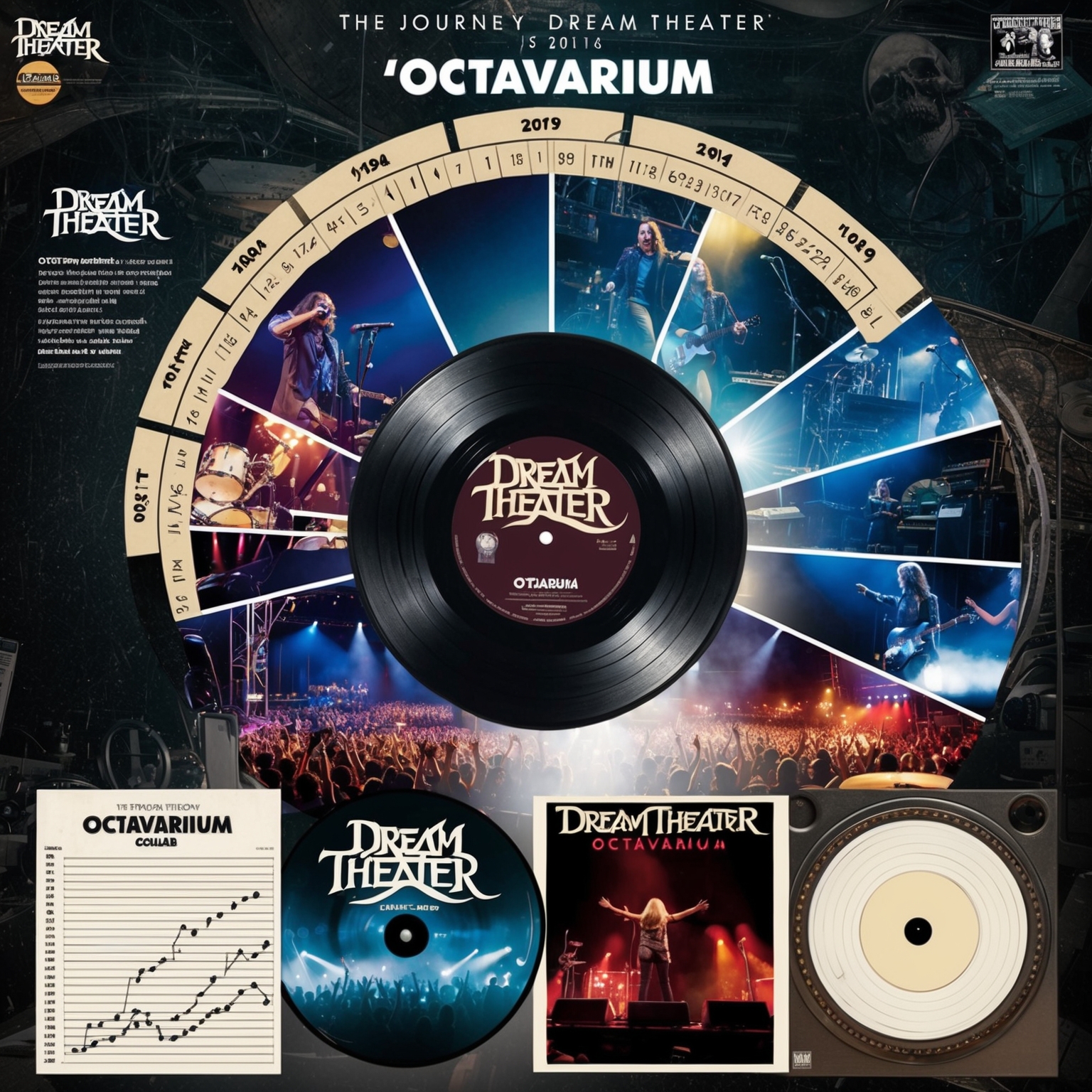
Released on June 7, 2005, ‘Octavarium’ by Dream Theater marked a significant moment in the band’s illustrious career. While it didn’t skyrocket to the top of mainstream charts, the song fortified the band’s reputation within the progressive metal genre. The album ‘Octavarium,’ which housed the track, debuted at No. 36 on the Billboard 200, a respectable position that highlighted its niche popularity and the band’s devoted fanbase. Unlike pop hits dominating the charts at that time, ‘Octavarium’ appealed to a specific cohort of listeners, emphasizing intricate compositions and elaborate musical themes.
The progressive metal scene of the 2000s was a field with few broadly acknowledged chart-toppers, and ‘Octavarium’ fit this mold. Compared to other tracks, it lacked radio-friendly hooks but made up with a profound artistic statement. Though it was not a breakthrough smash in mass media, it reinforced Dream Theater’s status as titans in their genre. The song’s complexity and length, typical of progressive rock, stood out against the more straightforward pop and rock tracks that were contemporaneously topping the charts. This reflective journey became a beacon of the band’s ethos — challenging mainstream simplicity with reputable skill and substance.
Promotional strategies leaned heavily on word of mouth and live performances, culminating in the band’s awareness tours and special editions that captivated their audience. Although not a frequent feature on pop radio, ‘Octavarium’ enjoyed airplay on specialized rock and progressive rock radio stations, crystallizing its role within its genre.
Critically, the song was met with acclaim for its musical prowess and depth, earning accolades for Dream Theater’s continued evolution in their distinctive sound. Reviews frequently commended its ambition and cohesiveness, despite its extensive runtime. Although mainstream awards overlooked it, within fan communities and progressive circles, the song solidified Dream Theater’s legendary status. Over the years, its cultural impact has been evident in the way it influenced upcoming artists who sought to blend complexity with melodious narratives.
Visual Explorations: The Absence of an Official Music Video
Explore the fan-driven visual interpretations and live performances that capture the essence of Dream Theater’s ‘Octavarium,’ a song without an official music video.
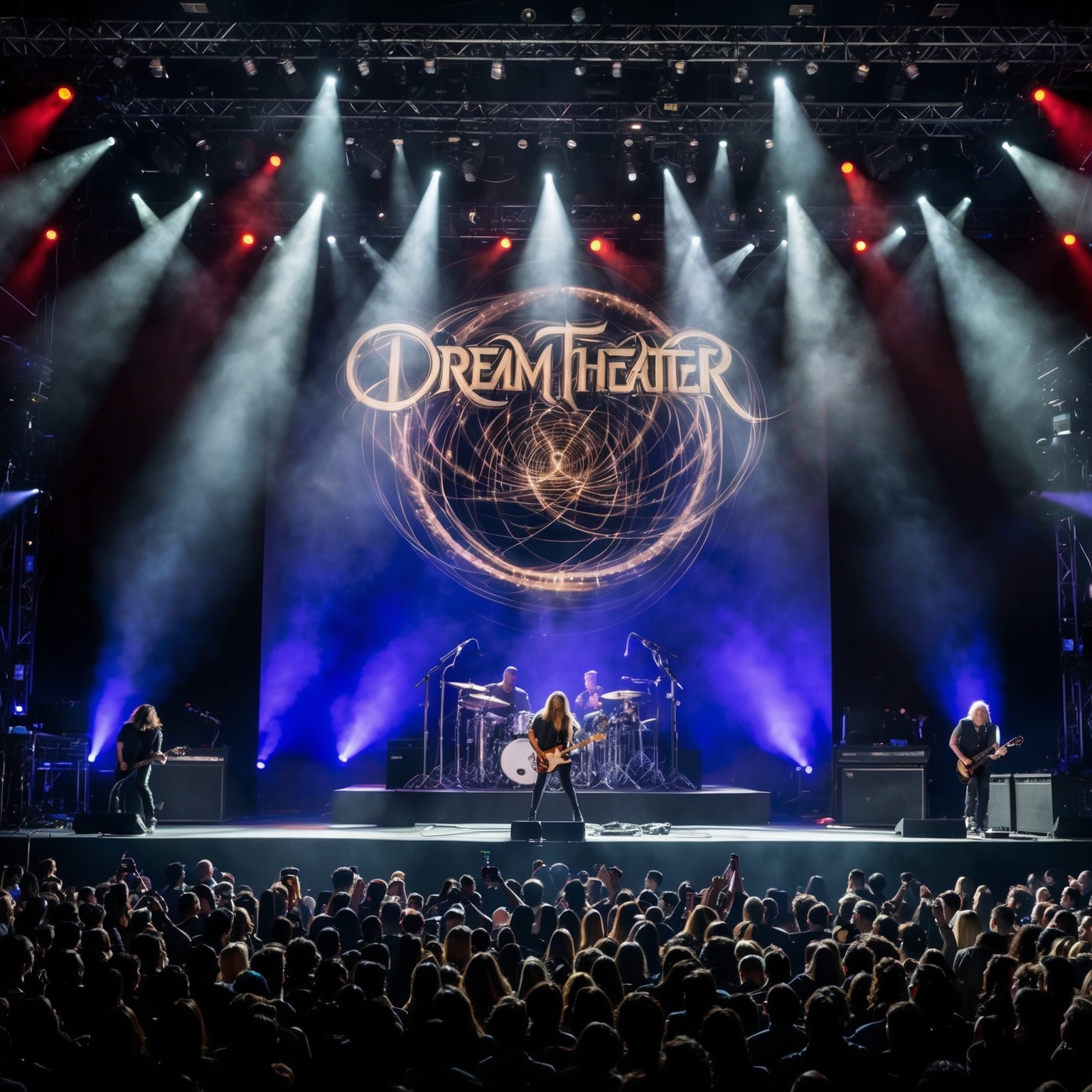
While the progressive rock epic ‘Octavarium’ by Dream Theater does not have an official music video, its sprawling narrative and musical ambition have inspired fans and live performances that encapsulate the essence of the track. These visual renditions aim to bring the song’s themes of cyclical beginnings and endings to life through a variety of creative interpretations. Fan-made video projects often emphasize the song’s dynamic shifts in tempo and mood, utilizing visuals that mirror the complex instrumentation and emotional journey that ‘Octavarium’ takes the listener on over its 24-minute runtime.
Among the most notable visual accompaniments to ‘Octavarium’ are the band’s live performances. In these settings, Dream Theater elevates the experience with intricate stage lighting, visual effects, and an immersive atmosphere that capture the grandeur of the piece. The progressive band’s theatrical presentation enhances the thematic elements of the song, such as the exploration of destiny, the passage of time, and the cyclical nature of life. Concerts become an extension of the music itself, enabling the audience to visually and audibly experience the narrative journey of ‘Octavarium.’
Despite the absence of a traditional music video, fan engagement remains high, with numerous creative interpretations and tributes circulating online. These efforts demonstrate the impactful connection fans have with the song, as they often include symbolic imagery linked to the lyrics and themes. Through unique animations, edited clips from live performances, or symbolic imagery, these fan videos are a testament to ‘Octavarium’s’ enduring legacy and its profound influence on listeners and visual artists alike.
Mastering Complexity: The Structural Genius of ‘Octavarium’
Dream Theater’s “Octavarium” exemplifies their mastery in progressive metal with an intricate structure of five sections, complex time signatures, and harmonic richness, highlighting the band’s musical evolution.

“Octavarium” by Dream Theater is a cornerstone of progressive metal, showcasing an intricate song structure that reflects the band’s unrelenting pursuit of musical complexity. This epic track, spanning 24 minutes, is renowned for its elaborate sections and dynamic shifts that blend multiple musical styles and narratives into a single composition.
The song is constructed in five distinct sections titled ‘Someone Like Him,’ ‘Medicate (Awakening),’ ‘Full Circle,’ ‘Intervals,’ and ‘Razor’s Edge,’ which explore varying themes and musical motifs. In terms of key, “Octavarium” is primarily written in the key of F minor, with numerous key changes that create a tapestry of harmonic tension and release throughout the composition. The chord progressions and tempo changes serve as a testament to Dream Theater’s mastery of blending technical prowess with emotional depth.
The melody, harmony, and rhythm of “Octavarium” are meticulously crafted. The melody often incorporates wide intervals and dynamic vocal lines, while the harmony leverages rich, layered instrumental textures. The rhythm section doesn’t shy away from complex time signatures, shifting between 6/8, 7/8, and more conventional 4/4, which is characteristic of the band’s progressive roots. Instruments like keyboards, electric guitar, bass, drums, and orchestral elements each play a pivotal role in contributing to the song’s unique sound, with the keyboards and guitar solos being particularly notable for their virtuosity.
Comparatively, “Octavarium” stands as a significant work in Dream Theater’s discography, representing a culmination of their progressive metal evolution. It reflects a maturity in composition, marrying the aggressiveness of their earlier works with a newfound symphonic depth observed in later albums. The use of a conceptual approach ties it to their broader artistic journey, marking a clear narrative of growth and experimentation.
The recording of “Octavarium” took place at The Hit Factory in New York, one of the last albums recorded there before its closure. The producer, John Petrucci, also the band’s guitarist, worked closely with engineer Michael H. Brauer to capture the grandiose, spatial sound the album is known for. Anecdotes from the session reveal the band’s meticulous dedication – spending hours crafting and layering each intricate part to achieve the desired sound, reflecting their commitment to perfection.
A Journey Through Existential Reflection and Identity
Dream Theater’s ‘Octavarium’ explores themes of identity, existential reflection, and personal transformation through intricate lyrical storytelling and literary devices.
So secure content to live each day just like the last
I was sure I knew that this was not for me
And I wanted so much more
Far beyond what I could see
So I swore that I’d
Never be someone like him
So many years have passed
Since I proclaimed my independence
My mission
My aim
And my vision
So secure content to live each day like it’s my last
It’s wonderful to know that I could be
Something more than what I dreamed
Far beyond what I could see
Still I swear that I’m
Missing out this time
As far as I could tell
There’s nothing more I need
But still I ask myself
Could this be everything?
Then all I swore
That I would never be was now
So suddenly
The only thing
I wanted
To become
To be someone just like him
A doctor sitting next to me
He asks me how I feel
Not sure I understand his questioning
He says I’ve been away a while
But thinks he has cured me
From a state of catatonic sleep
For 30 years where have I been
…
******* This Lyrics is NOT for Commercial use *******
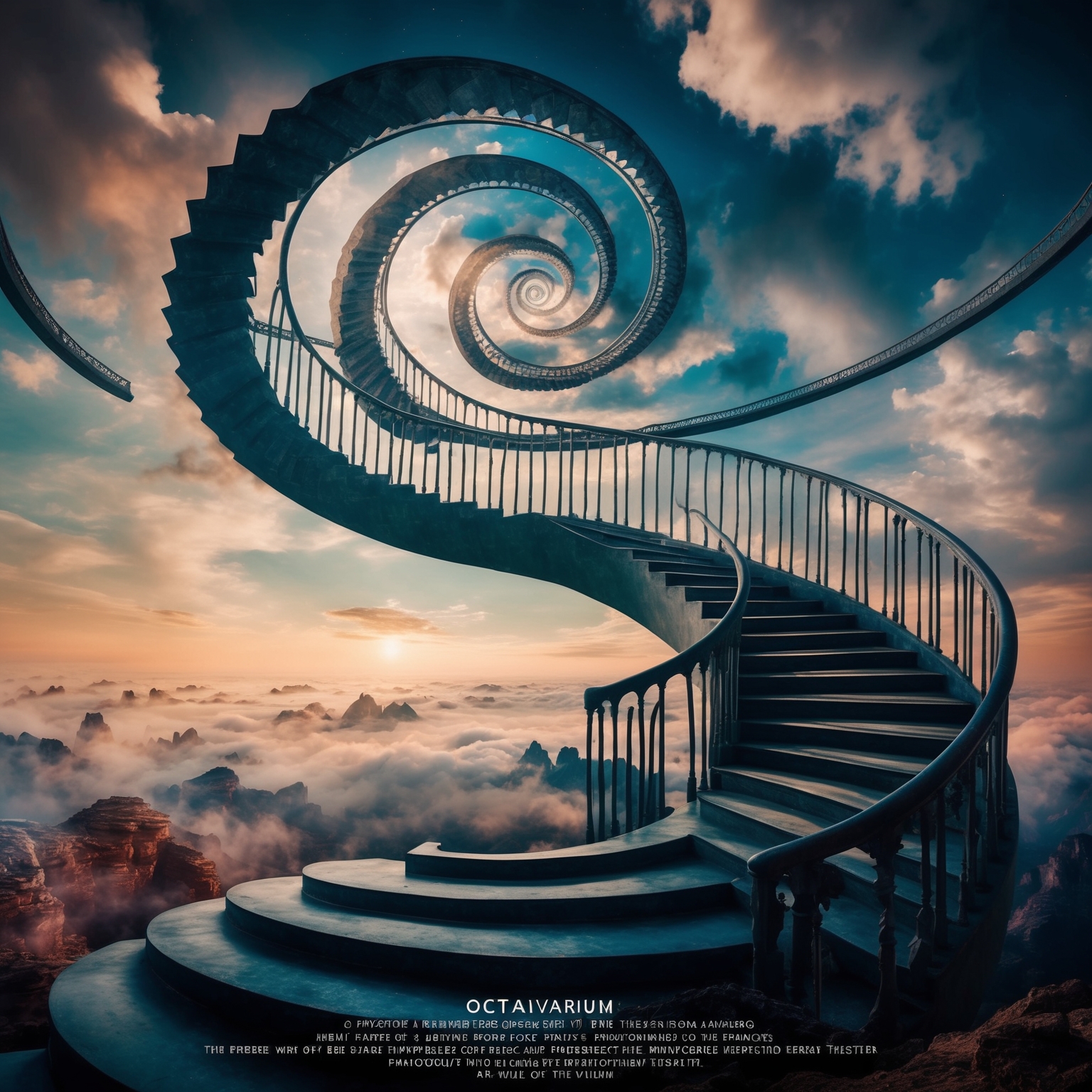
Dream Theater’s ‘Octavarium’ is a lyrical exploration that invites listeners to contemplate themes of identity, purpose, and existential reflection. The lyrics embark on a journey from a state of self-awareness, where the protagonist vows to never follow in someone else’s footsteps, to a realization of the inevitable cycle of life that leads them back to a similar state as the one they initially rejected. This reflective theme speaks to the universal human experience of grappling with identity and self-discovery.
The storytelling within ‘Octavarium’ is both deeply personal and broadly relatable, unfolding in a narrative that mirrors the hero’s journey. The use of first-person perspective immerses the audience in the internal conflicts and revelations of the protagonist. As the narrative progresses, we see a transformation from determination and youthful defiance to introspection and acceptance, painting a poignant picture of life’s ironic twists and turns.
Literary devices are a cornerstone of the song’s lyrical appeal. The recurring metaphor of awakening from a ‘catatonic sleep’ symbolizes a prolonged period of unawareness or denial, while the cyclical journey reflects the larger theme of life’s repetitions. Moreover, the lyrics’ introspective questions and contemplative tone encourage listeners to engage with their own self-perceptions, asking the difficult question, ‘Could this be everything?’. These elements not only enhance the emotional depth of the song but also connect the audience to its underlying message of introspection and transformation.
Comparatively, ‘Octavarium’ shares thematic continuity with other Dream Theater songs, such as ‘The Spirit Carries On’ from their earlier album. While each song presents a unique narrative, they collectively contribute to the band’s exploration of existential and philosophical themes. The nuanced intricacies of Dream Theater’s lyrics continue to foster a deep connection with fans, despite—or perhaps because of—their multifaceted and sometimes ambiguous nature.
🎸 Did you know? Dream Theater’s Octavarium is exactly 24 mins & mirrors an 8-note scale—8 years to make, 8 tracks on the album! #DreamTheater #ProgMetalFun #Octavarium 🎶 tinyurl.com/4vy6yufv
Click to Tweet


